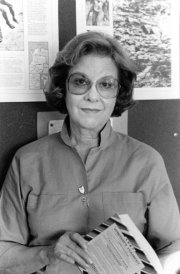CT Journalism Hall of Fame: Harold Hornstein
 Harold Hornstein graduated with a degree in journalism from the University of Missouri in 1947, which he attended following his service in World War II in the Army. In the war he served during the invasion of Sicily and in Italy, Corsica, France and Belgium. He started his professional journalism career in 1948 as an investigative reporter for the Enquirer of Columbus, Georgia. He was a cub reporter, but his work in Georgia from 1948 to 1952 led to his paper winning a Pulitzer in 1955 for the clean up of Phenix City, which had been known as “Sin City.”
Harold Hornstein graduated with a degree in journalism from the University of Missouri in 1947, which he attended following his service in World War II in the Army. In the war he served during the invasion of Sicily and in Italy, Corsica, France and Belgium. He started his professional journalism career in 1948 as an investigative reporter for the Enquirer of Columbus, Georgia. He was a cub reporter, but his work in Georgia from 1948 to 1952 led to his paper winning a Pulitzer in 1955 for the clean up of Phenix City, which had been known as “Sin City.”
He moved to Connecticut in 1952 and started work at the Fairfield Citizen. He moved to the Westport Town Crier as news editor. He worked as a reporter and editorial writer at several papers, including the Bridgeport Post-Telegram, now known as the Connecticut Post. He toiled there for 14 years until joining the New Haven Register and its sister paper – the old Journal-Courier. He wrote editorials for those papers until 1987 when he “retired.” He also wrote the Our Connecticut column weekly for the Register for about 15 years and continued writing editorials on a free-lance basis.
But Harold wasn’t done yet. He covered education for the Westport News for three more years. And he is still writing free-lance for the Westport News, the New York Times Connecticut section, the Fairfield News and Westport Magazine. Not bad for a man who is approaching 86 years on the planet.
His stories and editorials have helped conserve the environment, improve safety at summer camps and dealt with a myriad of other issues important to readers in Connecticut.
Harold Hornstein has collected a number of journalism awards over the years that are testament to his dedication, persistence and talent. He, along with SPJ Board member, Debra Estock, won a first place for environmental reporting from the New England Press Association in 1998. The stories helped insure preservation of 800 acres known as Trout Brook Valley in Easton and Weston.
Harold has won many other awards, but perhaps the one dearest to SPJ is the 1992 Stephen Collins Public Service Award. That is given to only one news organization in the state each year. Harold’s stories about elementary school buses led the Westport Board of Education to institute safety monitors on the buses.
He has also passed along his craft to many young reporters at various papers and taught as an adjunct professor at Southern, the University of Bridgeport, the University of Hartford and Gateway Community College.
Harold Hornstein exemplifies the word “journalist.” He is an inspiration to all of us. He has dedicated his life to explaining Connecticut to his readers and we are all better for it.
He passed away in 2011 at age 90.









